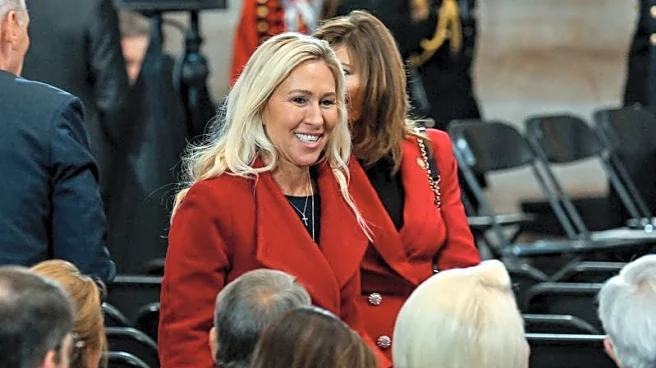What's Happening?
Car insurance prices in the United States have seen a significant increase, with average policies rising by 55% over the past three years, according to the Bureau of Labor Statistics. Mark Fitzpatrick, a licensed property and casualty insurance producer
and personal finance expert at MoneyGeek, attributes this rise to several factors. The increasing cost of new cars, now averaging around $50,000, contributes to higher insurance rates due to more expensive repairs and advanced technology in vehicles. Additionally, rising healthcare costs impact the liability side of insurance, as insurers are responsible for bodily injury claims. Fitzpatrick also highlights personal risk factors, such as age and credit-based insurance scores, which can affect individual premiums. State regulations play a role, with variations in legal structures influencing insurance costs. For example, no-fault insurance states tend to have higher rates due to reduced litigation but can lead to fraud and system abuse.
Why It's Important?
The rising cost of car insurance has significant implications for American consumers, affecting household budgets and financial planning. As insurance premiums increase, individuals may face challenges in affording necessary coverage, potentially leading to underinsurance or financial strain. The disparity in insurance costs across states highlights the impact of regional regulations and market conditions, influencing consumer choices and mobility. Higher insurance costs can also affect the automotive industry, as consumers may delay purchasing new vehicles due to increased ownership expenses. Insurers face pressure to balance rising costs with competitive pricing, impacting their profitability and market strategies. Understanding these dynamics is crucial for policymakers and industry stakeholders to address affordability and accessibility issues in the insurance market.
What's Next?
Consumers are advised to shop around for insurance policies, utilizing rate comparison tools and seeking discounts to mitigate rising costs. Insurance companies may continue to adjust premiums based on evolving market conditions and regulatory changes. State regulators could review and potentially reform insurance laws to address affordability concerns and prevent price gouging. The industry may explore innovative solutions, such as usage-based insurance models, to offer more personalized and cost-effective coverage options. As healthcare and vehicle costs continue to rise, insurers and policymakers must collaborate to ensure sustainable and equitable insurance practices.
Beyond the Headlines
The increase in car insurance costs raises ethical and legal questions about the fairness of pricing models, particularly regarding credit-based insurance scores and age-related risk assessments. These practices may disproportionately affect certain demographic groups, leading to calls for regulatory scrutiny and reform. The broader economic impact of rising insurance costs could influence consumer behavior, potentially reducing vehicle ownership rates and altering transportation patterns. Long-term shifts in the insurance industry may include greater emphasis on technology-driven solutions and data analytics to enhance risk assessment and pricing strategies.














